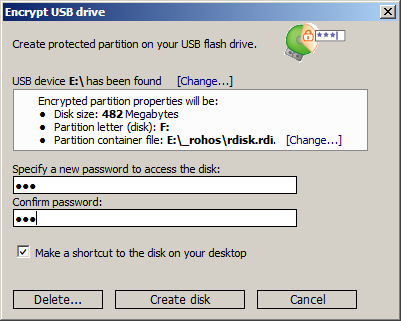
DiskCryptor is often referred to as an open source alternative to Bitlocker if you don’t have a Bitlocker capable Windows, and with compatibility from Windows 2000 up to Windows 8.1/Server 2012, it’s certainly more compatible than Bitlocker. Mar 5, 2018 - DiskCryptor is an open source tool for encryption that is used for. It bags the advantage of being portable wherein you can directly run the.
DiskCryptor download is a tiny 750Kb, after installing it you will need to reboot the computer, you might notice that its 64bit drivers come signed by the ReactOS foundation a non for profit organization assisting open source projects not able to acquire an expensive signing certificate to distribute Windows 64bit drivers. Encrypting my Windows 7 Home Premium 64bit OS, with a fairly powerful Intel i5 2200Hz (quad core) absorbed very low CPU, a steady 7% of the available resources, it took me 20 hours to encrypt a 1TB hard drive, it would have been considerably quicker using just the AES algorithm instead of the cascade algorithm I selected. DiskCryptor encryption keyfile Truecrypt will ask you to enter your password after rebooting your computer before encrypting your operating system, DiskCryptor will not, it assumes you entered the passphrase correctly twice as asked and did not make any mistake. When using special signs in your password be aware that in booting up your computer the keyboard has a US layout that will not correspond with a non US keyboard, I searched for a photograph of US keyboard layout on the Internet to make sure there would be no mistakes about what keys to pres. Unlike Truecrypt, DiskCryptor bootloader is highly configurable, I have my own (Ascii) logo at logon and I instructed DiskCryptor to time out after 30 seconds of inactivity at which point the computer reboots, other options like halt and exit to BIOS are possible. Using DiskCryptor keyfile for full disk encryption is something possible and not supported by Truecrypt, a keyfile will thwart dictionary attacks on your passphrase but this keyfile can not consist of anything it has to be a 64 byte file generated by DiskCryptor.
Windows 7 FDE specific problem Unlike Vista, XP and lower Windows versions, when you use a whole disk encryption product on Windows 7, or installing a dual boot, you will notice that Windows 7 automatically creates a 100MB system reserved partition, 24MB contains actual data the rest is there for future use like Bitlocker or system restore, this partition is hidden by Windows and only visible using a live CD or through DiskCryptor or Truecrypt interface. Windows 7 100MB hidden system partition Windows 7 system reserved partition contains some necessary boot files, do not attempt to encrypt Windows 7 system reserved partition like I did because the computer will not boot!
Optometriya dlya nachinayuschih optometristov kupitj. Write something about yourself. No need to be fancy, just an overview. No Archives Categories.
There are hacks around to merge that partition with the main Windows 7 operating system, I managed to do it partioning the hard disk with PartedMagic before installing Windows 7 and ignoring Windows installation DVD asking me to create the system reserved partition, everything worked fine until I fully encrypted Windows 7 without the system reserved space and the computer refused to boot. If you would like to use whole disk encryption in Windows 7 there is no choice but to give in and allow Windows to create the unencrypted 100MB system partition, this shouldn’t be a problem regarding data leakage, you can view the files it contains with a live CD, I managed to see a bootsect.bak file, bootmgr, and System Volume Information folder and a few others with no obvious danger. Truecrypt vs DiskCryptor comparison table. DiskCryptor full disk encryption A computer with no operating system and a wiped hard disk will look very suspicious, claims that it was wiped the day before would be held with incredulity but hard to prove it didn’t happen. Even better, I came across a thread in DiskCryptor forums to have a dual OS system where one of the Windows OS will only boot with the USB thumbdrive plugged in and when not present the other OS will boot, this set up makes one of the partitions look like random data and not like 2 operating systems on one hard disk. Conclusion Truecrypt vs Diskcryptor If you have a tablet or netbook without a CD-drive go for DiskCryptor because Truecrypt forces you to burn a recovery CD (there is a work around using CD-drive virtualization software, i.e. Alcohol 120% or using the command line /noisocheck).